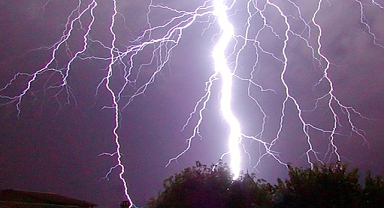The Philippine government ordered a two-day suspension of schools and government offices across Luzon, the country’s largest island, except for those needed for emergency services. Trami—referred to locally as Kristine—made landfall overnight in Isabela province, bringing maximum sustained winds of 95 kph (59 mph) and gusts up to 160 kph (99 mph). It continued its path westward, heading toward the South China Sea later on Thursday, according to state weather forecasters. Residents look at a car buried by volcanic ash which cascaded into a village triggered by heavy rains brought about by Tropical Storm Trami at a village in Guinobatan town, Albay province south of Manila, Philippines, on October 23, 2024. Charism Sayat/AFP/Getty ImagesBicol Region Takes the Hardest Hit
Residents look at a car buried by volcanic ash which cascaded into a village triggered by heavy rains brought about by Tropical Storm Trami at a village in Guinobatan town, Albay province south of Manila, Philippines, on October 23, 2024. Charism Sayat/AFP/Getty ImagesBicol Region Takes the Hardest Hit
The storm has caused significant casualties, with most fatalities reported in the Bicol region, located southeast of Manila. At least 20 people perished there, including seven residents of Naga City, where flash floods inundated the area on Tuesday. Officials said the storm dumped two months’ worth of rain within 24 hours, coinciding with high tide, which worsened the flooding.“Floodwaters have trapped hundreds of people, some on rooftops, and more are still waiting for rescue,” said Brig. Gen. Andre Dizon, regional police chief. “We urgently need more motorboats to reach everyone.”Around 1,500 police officers have been deployed for relief operations, but the rescue efforts have been hindered by strong winds and continuous rain. Some vehicles in Naga City were washed away by flash floods, while mudflows from Mayon Volcano in neighboring Albay province buried several others, further complicating the response.Widespread Displacement and Ongoing Rescue Operations
The disaster management agency reported that more than 2 million people across the affected areas have felt the impact of the storm, with at least 75,400 villagers forced to evacuate to safer locations. While many have already been rescued, officials are racing against time to reach others still stranded in isolated communities.“We’re coordinating efforts to bring food and water to those who can’t be evacuated immediately,” Dizon added.As relief operations continue, officials warned that the death toll might rise, with remote areas still unreachable due to landslides, flooded roads, and toppled trees.Frequent Storms and the Ongoing Challenge for the Philippines
The Philippines faces approximately 20 storms and typhoons annually, often causing widespread destruction. In 2013, Typhoon Haiyan, one of the most powerful tropical cyclones on record, left over 7,300 people dead or missing and flattened entire towns, underscoring the country’s vulnerability to such natural disasters. An aerial view shows a coast guard rescue boat evacuating residents to safer gounds in Polangui town, Albay province south of Manila, Philippines on October 23, 2024. Charism Sayat/AFP/Getty Images
An aerial view shows a coast guard rescue boat evacuating residents to safer gounds in Polangui town, Albay province south of Manila, Philippines on October 23, 2024. Charism Sayat/AFP/Getty Images
 Residents look at a car buried by volcanic ash which cascaded into a village triggered by heavy rains brought about by Tropical Storm Trami at a village in Guinobatan town, Albay province south of Manila, Philippines, on October 23, 2024. Charism Sayat/AFP/Getty ImagesBicol Region Takes the Hardest Hit
Residents look at a car buried by volcanic ash which cascaded into a village triggered by heavy rains brought about by Tropical Storm Trami at a village in Guinobatan town, Albay province south of Manila, Philippines, on October 23, 2024. Charism Sayat/AFP/Getty ImagesBicol Region Takes the Hardest HitThe storm has caused significant casualties, with most fatalities reported in the Bicol region, located southeast of Manila. At least 20 people perished there, including seven residents of Naga City, where flash floods inundated the area on Tuesday. Officials said the storm dumped two months’ worth of rain within 24 hours, coinciding with high tide, which worsened the flooding.“Floodwaters have trapped hundreds of people, some on rooftops, and more are still waiting for rescue,” said Brig. Gen. Andre Dizon, regional police chief. “We urgently need more motorboats to reach everyone.”Around 1,500 police officers have been deployed for relief operations, but the rescue efforts have been hindered by strong winds and continuous rain. Some vehicles in Naga City were washed away by flash floods, while mudflows from Mayon Volcano in neighboring Albay province buried several others, further complicating the response.Widespread Displacement and Ongoing Rescue Operations
The disaster management agency reported that more than 2 million people across the affected areas have felt the impact of the storm, with at least 75,400 villagers forced to evacuate to safer locations. While many have already been rescued, officials are racing against time to reach others still stranded in isolated communities.“We’re coordinating efforts to bring food and water to those who can’t be evacuated immediately,” Dizon added.As relief operations continue, officials warned that the death toll might rise, with remote areas still unreachable due to landslides, flooded roads, and toppled trees.Frequent Storms and the Ongoing Challenge for the Philippines
The Philippines faces approximately 20 storms and typhoons annually, often causing widespread destruction. In 2013, Typhoon Haiyan, one of the most powerful tropical cyclones on record, left over 7,300 people dead or missing and flattened entire towns, underscoring the country’s vulnerability to such natural disasters.
 An aerial view shows a coast guard rescue boat evacuating residents to safer gounds in Polangui town, Albay province south of Manila, Philippines on October 23, 2024. Charism Sayat/AFP/Getty Images
An aerial view shows a coast guard rescue boat evacuating residents to safer gounds in Polangui town, Albay province south of Manila, Philippines on October 23, 2024. Charism Sayat/AFP/Getty Images







